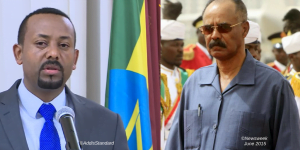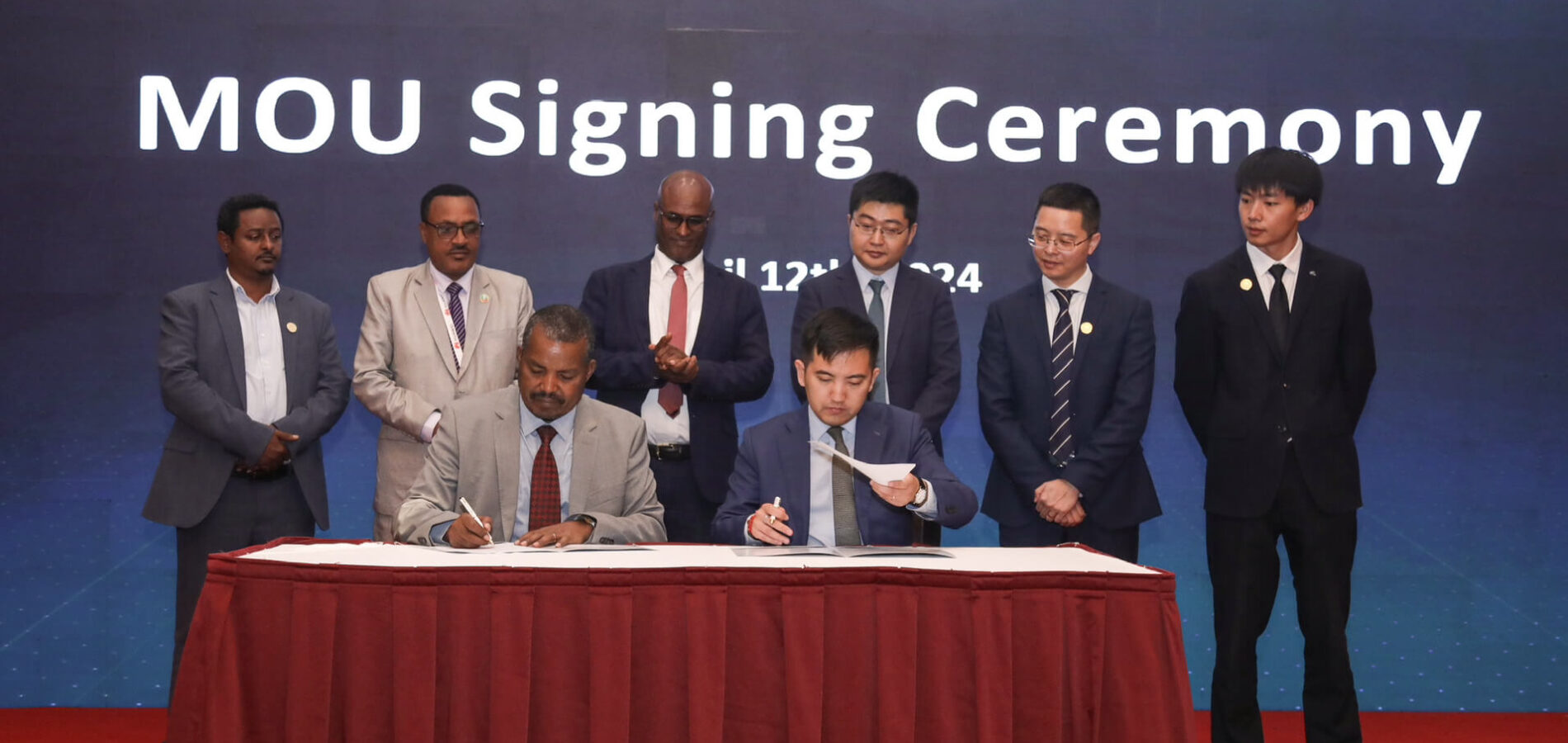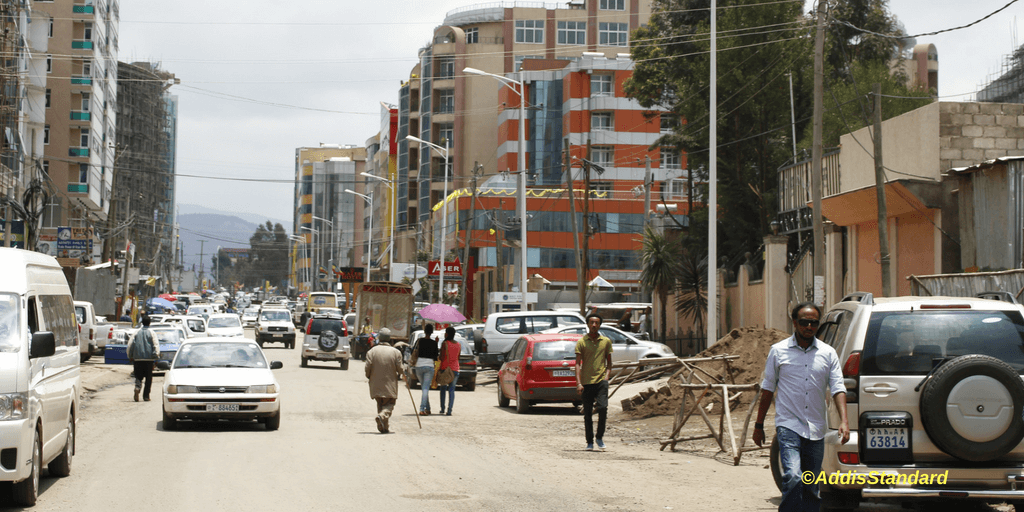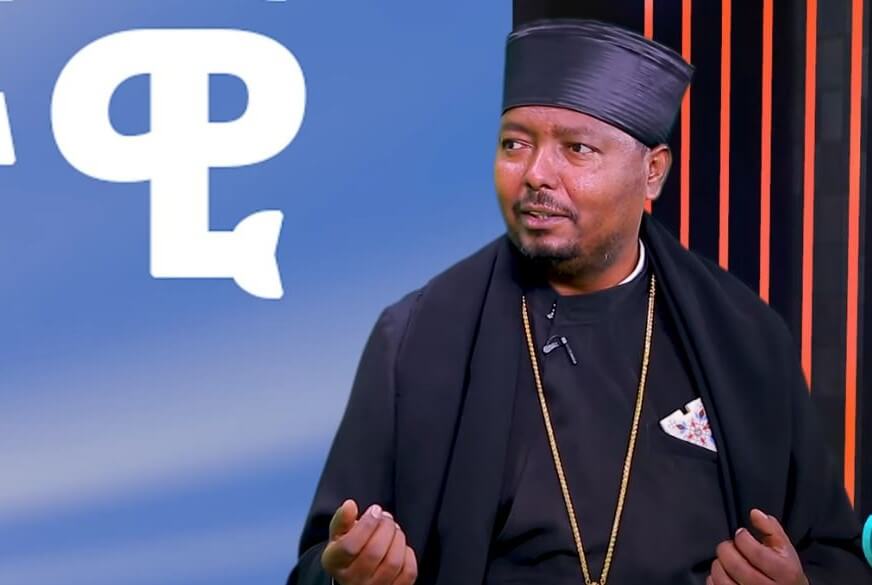Editorial: Post-project X for Ethiopia and Eritrea: How to move from containment to détente

Editorial
Addis Abeba, June 12/2018 – Comments on the “no-war, no-peace” status between Ethiopia and Eritrea can be viewed and/or assessed from three levels. At the diagnostic level, it is argued (rightly) that the border dispute that was presented as the official reason behind the outbreak of the war was simply a mask for other much deeper and complex problems. And at the prognostic level, it is equally argued (again rightly) that the so called “no war, no peace” stalemate is no longer sustainable and that normalization of relations should be restored for the benefit of both countries, the region and the global community. At the prescriptive level, however, it is argued (often erroneously and dangerously) that Ethiopia should unilaterally and unconditionally withdraw from Badme, the epicenter of the two years’ senseless war between the two countries, in the morning so that negotiations could start in the afternoon. In a similar vein, analysts who argue that border was not the cause of the Ethiopia-Eritrea war argue that giving away Badme unilaterally would be the beginning of the end of all problems between the two countries and in the wider region.
Since the causes of the conflict have been thoroughly discussed over the years that followed the 1998 – 2000 costly war, this editorial attempts to deal with the successes and limitations of Ethiopia’s containment policy vis-à-vis Eritrea and its shortfall; Eritrea’s foreign policy towards Ethiopia and its miscalculations; and a road map for breaking the deadlock.
Ethiopia’s containment policy: Kanaan’s baby and its bathwater
Ethiopia’s policy of containment seems to have been an excellent replica and contextualization of George Kennan’s famous ‘Project X’, which later served as the basis of American Containment Policy towards the then USSR. “What we must do,” said Secretary of State Dean G. Acheson, “is to create situations of strength; we must build strength and if we create that strength then I think the whole situation in the world begins to change . . . with that change there comes a difference in the negotiating positions of the various parties, and out of that I should hope there will be a willingness on the part of the Kremlin to recognize the facts”.
Similarly, Ethiopia’s White Paper of 2002 points out that: “If we reduce our vulnerability and make it known, the Eritrean regime may decide not to press its luck too far. …We should focus on reducing our vulnerabilities in order to prevent conflict. We need to finalize our efforts to build a strong defense force and an adequate reserve and sticking to our policy of conflict prevention, we shall await better opportunities for going beyond this limited goals in the relations between the two countries. We trust that it is only a matter of time until things will change for the better in Eritrea… The maximal policy we will pursue regarding Eritrea will come into play where the regime or its policies have been changed.”
As the late Prime Minister Meles Zenawi quipped to American diplomats during the war, this policy took into consideration three possible outcomes: Ethiopia cracks; Eritrea cracks; there is a draw.
In the aftermath of the war, Ethiopia has been growing at a double digit rate while maintaining a military force superior to Eritrea’s by allocating a mere 3% on average of its GDP for the military, according to official claims. On the other hand, however, data available on Eritrea’s military spending between the years 2001 and 2003 indicate the country was allocating on average 20% of its GDP on defense. Eritrea is also believed to have maintained around 400 thousand troops in camps and the border (10% of the population) that in turn led to the migration of another 400k (another 10%) of its youth. Eritrea had arguably been cracking.
It is therefore safe to assume that the so called “no-war, no-peace” situation has been an active war for Eritrea and a relative peace for Ethiopia. And with an excusable exaggeration, it is tempting to assume Ethiopia’s strategy for the last 16 years as ‘The Art of War Par excellence’, until last week.
However, the ongoing global hegemonic shift from the West to the East (power transition) and from states to non-state actors (power diffusion), and the resultant and/or concurrent regional geopolitical dynamics and fragmentation, the mass exodus of refugees to Europe and the fear of another state collapse in the Red Sea (right in front of Yemen) meant that the world is forced to engage Eritrea, and Ethiopia is finding it hard to sustain the status quo i.e Eritrea has been slowly getting “out of the cold”. As is beautifully articulated by Robert Kaplan, having been relegated as insignificant after the end of The Cold War with liberal clichés like that of Thomas Freedman’s ‘Flat World’, geopolitics has returned with a vengeance to haunt the world and especially the largest land-locked country in the world i.e Ethiopia.
To be fair, Ethiopia’s containment policy, having been produced in 2002, did not take into account “the revenge of geography” but naively assumed the Red Sea would always remain to be the source of drinking water for Eritrean camels; ports were assumed to always be only commodities . It also assumed Eritrea’s security challenges would be of short-term and did not try to deal with medium and long term, worst case scenarios in which Eritrea could get out of cold without a change of regime and/or policy. Like the American Containment policy, Ethiopia’s definition of containment also treated power and diplomacy as two distinct elements or phases of policy. It implied that strength was self-evident and did not answer the question of how the situation of strength was to be demonstrated, nor what should be done if the balance of power and the regional geopolitical dynamics should change.
That prevented Ethiopia from preparing long-term strategies or from initiating negotiations at the right time i.e. while Ethiopia was much stronger and Eritrea was already cracking and desperate for normalization. Ethiopia took Kennan’s baby with its bathwater, so to speak.
Eritrea’s foreign policy and security doctrine was also devised based on the assumption that without its ports and with its active support of Ethiopian rebels (and with Eritrea itself serving as a proxy for Ethiopia’s strategic and historic adversaries), Ethiopia would be sandwiched between internal and external fires and then collapse, let alone grow and prosper. Secondly, Eritrea had thought that having Ethiopia as an enemy would help its project of nation building through the art of “foreign policy as the policy of making things foreign”. Thirdly, Eritrea expected that the no-war, no-peace status would justify its authoritarianism and indefinite conscription at home, thereby consolidating the ruling People’s Front for Democracy and Justice (PFDJ’s) regime.
The mass exodus of the Eritrean youth to Ethiopia, a country which the youth has been told is its arch-enemy, shows that neither the process of nation building nor the raison d’être for indefinite conscription is working. Moreover, the nature and size of migration from Eritrea has caused an unprecedented demographic mess in the country that it has deprived the Christians, Tigrigna speaking highland population of Eritrea (i.e the Kebesa) of the majority of its youth.
This has dramatically changed the power dynamics and societal relations between The Highland vs Lowland, Christian vs Muslim, Tigrigna speaking vs others within Eritrea, which in turn created panic among the historically dominant Tigrigna speaking populace and its elite, of which President Isaias Afeworki and his regime is part. And if the Tigrigna speaking youth is in flight (voting with its feet), then the lowland youth, having rejected the flight option, will surely fight soon. This is a nightmare scenario for both the regime and the highland population. The emergence of the so called Agazian movement, a Pan-Tigriyan nationalist movement, is partly the result of this anxiety on the part of the Kebesa population. As it stands now, therefore, there seems to be a draw between Ethiopia and Eritrea which means that both countries are faced with challenges and incentives for breaking the stalemate.
From containment to détente: here is how
The question now is what next? The dominant prescription is that Ethiopia should unilaterally and unconditionally withdraw from Badme in the morning so that negotiations could start in the afternoon. While the expectation is that giving away Badme will open the door for a broader and lasting peace, President Isaias could in fact use it as a reverse-linkage, a safety valve to rebrand himself, regain his legitimacy and consolidate his grip on power.
Rather than trying to save Eritrea from itself by imposing initiatives from Europe or by a policy of appeasement through giving away Badme, it would rather be more helpful and necessary to appeal to President Isaias’ enlightened self-interest and then promise him a second chance of saving his country from the problems he himself created. But he also needs to be assured of Western assistance to rebuild his country and possibly get back, and create jobs for, the Eritrean youth living in refugee camps in neighboring countries and beyond. It is also necessary to assure Isaias with the sirens of a new era when he (again) becomes a respected regional statesman and ideologue. This is given the facts that any attempt at normalization and sustainable peace in the region should take into account the major causes of conflicts, the enlightened self-interests of both parties and the participation and consultation of key regional and international powers and institutions.
Henry Kissinger’s classic memoirs give a historical analogy and principles of negotiations which are appropriate for this context. When the Nixon administration came to power, conventional wisdom had it that the policy of containment was no longer working and that détente was both necessary and good. Since strategic arms race limitation was the major concern of both blocs, experts and diplomats urged for a start of negotiations on SALT, Strategic Arms Limitations Talks, and then move to other areas, a typical Western view of foreign policy as an episodic enterprise. However, Nixon and Kissinger understood the risk of conducting foreign policy on an episodic sequence and insisted that “to separate issues into distinct compartments would encourage the Soviet leaders to believe that they could use cooperation in one area as a safety valve while striving for unilateral advantages elsewhere. This was unacceptable.” The solution, for Kissinger and Nixon, was “to deal with the problem of peace on the entire front in which peace is challenged and not only on the military one.”
On his ‘White House Years’, Kissinger discusses three principles which any meaningful diplomatic negotiations should be based on: Concreteness, Restraint, and Linkage.
Concreteness: if Ethiopia was to withdraw in the morning, then it should priori know what specific causes and areas of tensions, rather than general atmospherics, would the afternoon negotiations bring about. Both parties and mediators should not delude themselves and pretend that sentimental rhetoric or gestures of good faith would end the stalemate, or the potential for renewed conflict. Regional and international mediators should also explore areas of common concerns such complex matters of settlement and resettlement, and be ready to make precise agreements based on rules of compromise and the ethnics of reciprocity. These issues could and should be discussed and sorted out on the back channels, and preliminary negations on almost all major issues should be conducted.
The Principle Of Restraint: since both Ethiopia and Eritrea blame each other for their internal political problems, regional proxy wars and regional security challenges, both countries need to agree to commit to mutual restraint and should wholeheartedly and fully stop sponsoring rebels in each others’ territory and quit being proxies of the other’s strategic adversaries. Based on this, and based, of course, prior agreements signed between the two, IGAD and its member states, or the African Union (AU), to which they belong to, need to help devise a common framework for regional peace and security. This will set new rules of the game in the region.
The Principle of Linkage: The last and the major principle is linkage diplomacy. The problems that had led to the war in the first place and remained to underpin the stalemate are not only beyond border conflicts but are also fundamental in nature. Hence, any strategy that envisages solving the stalemate should encompass a roadmap that links all major issues; the success in one issue will not only enhance the other but also be dependent on it. While giving away Badme should not and need not be subject to negotiations, it should however be part of the whole package. Otherwise, Eritrea will likely take Badme and use it as a safety valve while at the same time remaining intransigent on other fundamental issues: a typical reverse-linkage tactic.
A roadmap with the above three principles could pave the way for a meaningful peace between the two countries and herald in a new security architecture in the region. But this requires patience, wisdom and strategic insight on the part of both governments and the international community. International Relations do not usually depend on (and are not dictated by) statesman’s good will, nor the wisdom and generosity of international mediators. If, following Kaplan, a state’s position on the map, more than its governing philosophy, is the first thing that defines it, then President Isaias might as well bet on his country’s position on the map to leverage unacceptable concessions from Ethiopia or even to remain intransigent to normalization efforts by Ethiopia. By merely giving away Badme, therefore, Ethiopia is unlikely to change President Isias’s behavior. And when and if this fails to bring Eritrea to the table, the temptation to change Ethiopia’s position in the map by conquering Eritrea, which many in Ethiopia still find attractive, may gain currency. But this is not only unwise but also dangerous; it is an option that should be off the table, always. To bring to the Ethiopian context what Vladimir Putin of Russia once said of his country, any Ethiopian who does not regret the secession of Eritrea is heartless; anyone who intends to get it back is brainless. AS








